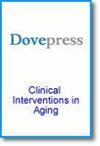A Comparison Between Two Different Definitions of Contrast-Associated Acute Kidney Injury for Long-Term Mortality in Patients with Chronic Kidney Disease Undergoing Coronary Angiography
IF 3.7
3区 医学
引用次数: 0
Abstract
Background: Contrast-associated acute kidney injury (CA-AKI) is a prevalent complication following coronary angiography (CAG). However, there is ongoing controversy surrounding its precise definition. Although previous studies have demonstrated the successful application of appropriate definitions in managing high-risk CA-AKI patients, there remains limited research on the association between different definitions and prognosis specifically in patients with chronic kidney disease (CKD).Methods: A total of 4197 CKD patients undergoing coronary angiography (CAG) were included in this study. Two definitions of contrast-associated acute kidney injury (CA-AKI) were used: CA-AKIA, which was defined as an increase of ≥ 0.5 mg/dL or > 25% in serum creatinine (SCr) from baseline within 72 hours after CAG, and CA-AKIB, which was defined as an increase of ≥ 0.3 mg/dL or > 50% in SCr from baseline within 48 hours after CAG. Cox regression analysis was employed to assess the association between these two definitions and long-term mortality. Additionally, population attributable risks (PARs) were calculated to evaluate the impact of CA-AKI definitions on long-term prognosis.
Results: During the median follow-up period of 4.70 (2.50– 7.78) years, the overall long-term mortality was 23.6%, and the long-term mortality in patients with CA-AKI according to both CA-AKIA and CA-AKIB criteria were 33.5% and 33.8%, respectively. We found that CA-AKIA (HR: 1.45, 95% CI: 1.23– 1.70, p< 0.001) and CA-AKIB (HR: 1.44, 95% CI: 1.23– 1.69, p< 0.001) were associated with long-term mortality. The PARs were the highest for CA-AKIA (5.87%), followed by CA-AKIB (5.70%).
Conclusion: Contrast-associated acute kidney injury (CA-AKI) is a frequently observed complication in CKD patients undergoing coronary angiography (CAG), and both definitions of CA-AKI are significantly correlated with a poor long-term prognosis. Consequently, in the clinical management of CKD patients, it is crucial to prioritize CA-AKI, irrespective of the specific CA-AKI definition used.
对比两种不同的对比度相关急性肾损伤定义对接受冠状动脉造影术的慢性肾病患者长期死亡率的影响
背景:对比度相关性急性肾损伤(CA-AKI)是冠状动脉造影术(CAG)后的一种常见并发症。然而,关于其确切定义的争议一直存在。尽管之前的研究已经证明,在管理高风险 CA-AKI 患者时成功应用了适当的定义,但对于不同定义与预后之间的关系,尤其是慢性肾脏病(CKD)患者的预后,研究仍然有限:本研究共纳入了 4197 名接受冠状动脉造影术(CAG)的 CKD 患者。对比剂相关急性肾损伤(CA-AKI)有两种定义:CA-AKIA定义为CAG术后72小时内血清肌酐(SCr)较基线升高≥0.5 mg/dL或25%;CA-AKIB定义为CAG术后48小时内血清肌酐(SCr)较基线升高≥0.3 mg/dL或50%。采用 Cox 回归分析评估这两种定义与长期死亡率之间的关系。此外,还计算了人群归因风险(PAR),以评估 CA-AKI 定义对长期预后的影响:中位随访期为 4.70(2.50- 7.78)年,总体长期死亡率为 23.6%,而根据 CA-AKIA 和 CA-AKIB 标准的 CA-AKI 患者的长期死亡率分别为 33.5% 和 33.8%。我们发现,CA-AKIA(HR:1.45,95% CI:1.23- 1.70,p< 0.001)和 CA-AKIB(HR:1.44,95% CI:1.23- 1.69,p< 0.001)与长期死亡率相关。CA-AKIA的PAR最高(5.87%),其次是CA-AKIB(5.70%):结论:对比度相关性急性肾损伤(CA-AKI)是接受冠状动脉造影术(CAG)的 CKD 患者中经常出现的并发症,两种定义的 CA-AKI 均与不良的长期预后显著相关。因此,在对 CKD 患者进行临床管理时,无论采用哪种特定的 CA-AKI 定义,都必须优先考虑 CA-AKI。
本文章由计算机程序翻译,如有差异,请以英文原文为准。
求助全文
约1分钟内获得全文
求助全文
来源期刊

Clinical Interventions in Aging
GERIATRICS & GERONTOLOGY-
CiteScore
6.20
自引率
2.80%
发文量
193
期刊介绍:
Clinical Interventions in Aging, is an online, peer reviewed, open access journal focusing on concise rapid reporting of original research and reviews in aging. Special attention will be given to papers reporting on actual or potential clinical applications leading to improved prevention or treatment of disease or a greater understanding of pathological processes that result from maladaptive changes in the body associated with aging. This journal is directed at a wide array of scientists, engineers, pharmacists, pharmacologists and clinical specialists wishing to maintain an up to date knowledge of this exciting and emerging field.
 求助内容:
求助内容: 应助结果提醒方式:
应助结果提醒方式:


